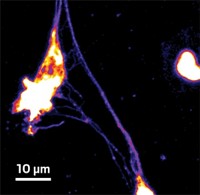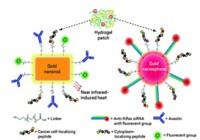Advertisement
Grab your lab coat. Let's get started
Welcome!
Welcome!
Create an account below to get 6 C&EN articles per month, receive newsletters and more - all free.
It seems this is your first time logging in online. Please enter the following information to continue.
As an ACS member you automatically get access to this site. All we need is few more details to create your reading experience.
Not you? Sign in with a different account.
Not you? Sign in with a different account.
ERROR 1
ERROR 1
ERROR 2
ERROR 2
ERROR 2
ERROR 2
ERROR 2
Password and Confirm password must match.
If you have an ACS member number, please enter it here so we can link this account to your membership. (optional)
ERROR 2
ACS values your privacy. By submitting your information, you are gaining access to C&EN and subscribing to our weekly newsletter. We use the information you provide to make your reading experience better, and we will never sell your data to third party members.
Analytical Chemistry
Glowing Tumors Guide Surgeons
Researchers develop sprayable indicator for lighting up cancer cells
by Lauren K. Wolf
November 28, 2011
| A version of this story appeared in
Volume 89, Issue 48
Doctors might one day remove cancerous tumors with the help of a spray-on fluorescent indicator, according to a report (Sci. Transl. Med., DOI: 10.1126/scitranslmed.3002823). Within minutes of being sprayed, cancer cells in suspect tissue would emit fluorescent light, guiding surgeons to the locations of malignancies. Although other fluorescent probes are in development for surgery, the new indicator acts more quickly and can be applied on the spot. Hisataka Kobayashi of the U.S.’s National Cancer Institute, Yasuteru Urano of Japan’s University of Tokyo, and coworkers demonstrated that their indicator, a caged γ-glutamyl hydroxymethyl rhodamine green compound, lit up tumors in mice with ovarian cancer within 90 seconds of being applied. The probe is nonfluorescent until it comes into contact with cancer cells, many of which overexpress the enzyme γ-glutamyltranspeptidase on their surfaces. The enzyme uncages the indicator by cleaving the glutamate group, causing it to fluoresce.





Join the conversation
Contact the reporter
Submit a Letter to the Editor for publication
Engage with us on Twitter